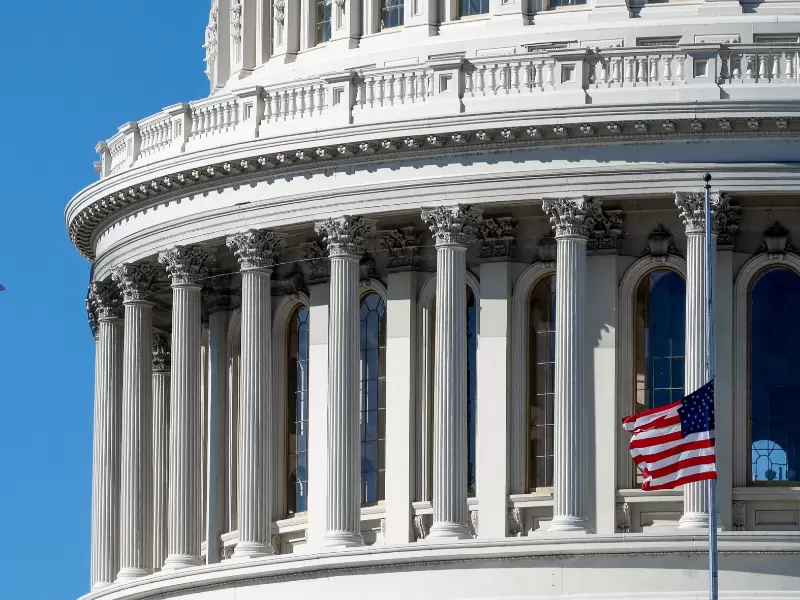Trump administration’s mass deportation promise: Is it feasible?
It would take a huge infusion of resources, increased staff, detention facilities and immigration court proceedings, more planes and buses to really scale up the operation.
 File photo. / Reuters
File photo. / Reuters
President-elect Donald Trump's early cabinet appointments signal that border security and immigration restrictions will be the central focus of his administration.
He named Tom Homan, the former acting director of U.S. Immigration and Customs Enforcement, as his administration’s “border czar.”
Experts at an Ethnic Media briefing shared their views on what to expect.
The panelists said it would take a huge infusion of resources, staff, detention facilities and immigration court proceedings, more planes and buses to really scale up the operation. It is quite hard to imagine getting to the kind of scale that's envisaged.
Deportation is an enormous task
“It is not as easy to deport people as you think,” said Jeremy Robbins, Executive Director, American Immigration Council. First, we need manpower to pull people out for deportation. “We don't know where people are and we need a lot of people to complete the task. It is extremely expensive.”
The left-leaning Center for American Progress puts the number of the undocumented immigrant population in the United States at around 11.3 million, with 7 million of them working.
According to Robbins: “There has to be a process. Where will they be deported to? Some countries won't take them back.
“President Trump is talking of deporting millions of people. The capacity of our detention facilities for immigrants in this country is about 50,000 and that is already filled. We have a backlog of more than a million cases. A case decision on whether to give asylum or deport, takes on the average five years.”
It would cost the exchequer about $315 billion dollars. And if you're trying to deport a million people per year, it would be about $88 billion a year. It's about almost a trillion dollars over a decade.
Ramping enforcement activities at the border or in the interior is going to take more resources. The Biden administration has already maximally deployed the existing ICE and CBP resources for enforcement. U.S. Customs and Border Protection employs about 45,000 law enforcement personnel. Its duties include stopping the unlawful movement of people and drugs across U.S. borders.
CBP has not been able to hire and retain its required number of Border Patrol agents or meet its goals for other law enforcement jobs.
Induce self-deportation
Fear among the immigrant community is rampant. Even people with legal status are afraid that they'll be rounded up just because of profiling.
The new administration will mobilize the National Guard who are not trained on immigration law. “That's going to result in more violations of the existing federal legal requirements, both in the immigration law space, such as proper screenings for SAM, as well as for civil rights harassment.”
Economic impact of mass deportation
During the campaign, Trump pledged to end the Temporary Protected Status that allows workers from select countries to come to the U.S. to work. If some of the larger deportation efforts, like rolling back TPS, come to fruition, experts say that there will be ripple effects felt in most sectors of the economy, in particular construction, housing and agriculture.
Julia Gelatt, Associate Director of our U.S. immigration policy program, Migration Policy Institute (MPI), says “about 5% of our workforce is unauthorized immigrants, but much more in some industries than others”.
Greg Chen, Senior Director of Government Relations for the American Immigration Lawyers Association (AILA), contends that “we are going to see devastation across the country of businesses and industries in just about every economic sector”.
Businesses, for instance, in the southern border in Arizona, in the southwest corner of Yuma County, where Chen was recently, are incredibly dependent on migrant labor for agriculture and are concerned about their labor needs getting impacted.
By one estimate from an immigration policy group, GDP could shrink by $1.1 trillion to $1.7 trillion.
However, President-elect Trump has also said his plan will bring more businesses into the country and the U.S. will need more workers to grow, said a panelist.
Effect on communities facing mass deportation
Elizabeth Taufa, Policy Attorney & Strategist, Immigrant Legal Resource Center (ILRC), spoke on the emotional and psychological effect on communities and how the fear of mass deportation plays out at the community level. “We will see kids not going to school because their parents are afraid of being deported; shortages of healthcare workers because people either move to states that are a little bit safer or they are removed from the country; and fewer teachers, as a number of teachers are here on temporary status like CPS and DACA.”
She also said: “It's not just the fact that they can't afford to do this. It's the unraveling of the threads of our American communities. And this is going to hit rural communities a lot harder than it is going to hit urban communities.”
For perspective, Homan had said at a conservative conference earlier this year: “No one’s off the table. If you’re here illegally, you better be looking over your shoulder.”
Tools Trump administration could use
Julia Gelatt, Associate Director of our U.S. immigration policy program, Migration Policy Institute (MPI), said there are some tools that the incoming Trump administration could use to try to increase the scope. They could use a quick removal process called expedited removal.
Expedited removal refers to a fast-track process that the federal government, through the U.S. Department of Homeland Security (DHS), uses to quickly deport: (a) those who arrive at the border and are turned away; or (b) who enter without authorization and are encountered by immigration officials within 100 miles of the northern or southern border within two weeks of their arrival.
“We'll see this play out really unevenly across localities,” said Gelatt. Most deportations tend to happen of people who have had involvement with local law enforcement, whether they committed a major crime or they were caught driving without a license in a state where licenses aren't available to them. The policies that local jurisdictions have about cooperating with ICE become very important in shaping the level of deportations in a community that come through local law enforcement.
For instance, we may see red states having higher levels of people transferred to ICE and deported. Blue states, where they have non-cooperation policies, may see less.
It will be difficult for the new administration to be able to get appropriations at the level required to engage in vastly increased deportations. The fiscal year’s budget is being prepared as we speak and that will lock up money at current levels until next September.
ADVERTISEMENT
ADVERTISEMENT
E Paper
Video



 Ritu Marwah
Ritu Marwah 












Comments
Start the conversation
Become a member of New India Abroad to start commenting.
Sign Up Now
Already have an account? Login